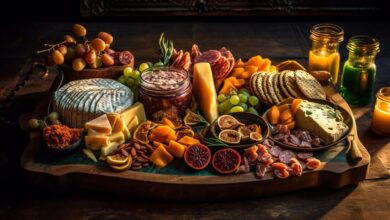Ceñillin: Unveiling the Hidden Jewel of Cultural Heritage

In the wealthy tapestry of worldwide traditions, there are regularly obscure elements that serve as treasures of cultural history. One such gem is “ceñillin,” a time period that encapsulates a charming intersection of history, tradition, and artistry. Although “ceñillin” won’t be a well known time period, its implications are deeply embedded inside the historic and cultural contexts from which it emerges. This article delves into the significance of ceñillin, exploring its origins, cultural relevance, and impact on modern-day know-how.
Origins and Definition
The term “ceñillin” is derived from a selected local subculture or artifact, frequently associated with a specific cultural or ancient placing. It is essential to clarify that the term may range in interpretation relying at the area and context. Historically, ceñillin may want to check with a traditional craft, a ceremonial object, or a term of endearment in positive communities.
To illustrate, consider ceñillin as an complicated form of folk art originating from a specific vicinity. This folk artwork ought to encompass hand made items along with textiles, pottery, or jewelry, each piece bearing particular symbols and motifs that reflect the cultural identification of its creators. The artistry of ceñillin might consequently be characterized with the aid of its one of a kind styles, materials, and strategies that have been handed down through generations.
Cultural Significance
The cultural significance of ceñillin lies in its embodiment of the values, ideals, and artistic expressions of a community. In many cultures, traditional crafts like ceñillin serve as a means of keeping historic narratives and practices. They frequently play a role in rituals, celebrations, and daily life, reinforcing a sense of identity and continuity among network contributors.
For example, if ceñillin had been a shape of fabric art, its patterns might convey testimonies from folklore or constitute key factors of neighborhood mythology. The technique of creating ceñillin would contain not simply technical ability however additionally a deep know-how of cultural symbols and traditions. Each piece would be a testomony to the artisan’s heritage, reflecting both man or woman creativity and collective reminiscence.
Historical Context

Understanding the historic context of ceñillin involves exploring the wider socio-political and monetary situations that motivated its improvement. Traditional crafts often arise in response to neighborhood desires, resource availability, and interactions with different cultures. For instance, if ceñillin had been a shape of pottery, its development might have been fashioned via change routes, technological improvements, and cultural exchanges with neighboring areas.
Historically, many conventional crafts faced demanding situations due to industrialization and globalization. However, efforts to preserve and revive such crafts have received momentum in recent years. The resurgence of interest in conventional arts like ceñillin highlights a growing appreciation for artisanal abilities and cultural historical past in a hastily changing world.
Contemporary Relevance
In cutting-edge instances, ceñillin’s relevance extends past its historical and cultural roots. As societies emerge as more and more globalized, there’s a renewed consciousness on maintaining and celebrating traditional arts. Artisans and cultural groups are operating to preserve ceñillin alive through adapting it to trendy contexts at the same time as honoring its conventional factors.
For example, cutting-edge artisans might include ceñillin techniques into modern-day fashion or domestic décor, developing a fusion of old and new that appeals to various audiences. This technique now not most effective helps preserve traditional practices however additionally introduces them to a broader target market, fostering cross-cultural appreciation and dialogue.
Challenges and Preservation
Despite its importance, ceñillin, like many traditional crafts, faces demanding situations related to preservation and sustainability. One fundamental project is the lack of conventional expertise as older generations pass away and younger generations migrate to city regions or adopt different professions. Additionally, the industrial pressures of contemporary markets can on occasion result in the commodification of traditional arts, probably diluting their cultural significance.
Efforts to hold ceñillin involve a mixture of schooling, documentation, and network engagement. Educational programs can help transmit competencies and know-how to more youthful generations, at the same time as documentation efforts make certain that strategies and memories are recorded for future reference. Community engagement initiatives, which includes workshops and exhibitions, can improve recognition and appreciation for ceñillin, encouraging a brand new era of fanatics and practitioners.
Conclusion
Ceñillin, although possibly not widely diagnosed, represents a crucial thing of cultural historical past. Its importance lies in its capability to convey historical narratives, cultural values, and inventive traditions through tangible styles of expression. By exploring the origins, cultural relevance, and current demanding situations associated with ceñillin, we gain a deeper appreciation for the methods wherein traditional arts make contributions to our know-how of human creativity and identity.



